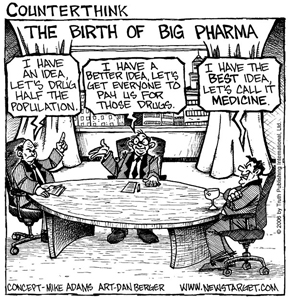Lest people think I am somehow targeting my orthopod colleagues in sharing about failed and faulty hips, here is a story from a different part of the body.
Johnson & Johnson's Ethicon subsidiary has very recently been involved in a voluntary recall (called by the company, a "discontinuation") of a series of their products -the Gynecare vaginal meshes. These include -the GYNECARE TVT SECUR™ system, GYNECARE PROSIMA™Pelvic Floor Repair System, GYNECARE PROLIFT™ Pelvic Floor Repair System, and GYNECARE PROLIFT+M™ Pelvic Floor Repair System. These are meshes which are being used in women for the repair of urinary incontinence and droopy pelvic floors. The problem was that these meshes were associated with frequent and severe problems such as - pain, infection, bleeding and painful intercourse.
The story leading up to these recalls is a fascinating study of why medical devices should be better regulated.
- Boston Scientific was the first to introduce the vaginal mesh (essentially a modification of a mesh used for repair of hernias) in 1996.
- Two years later a few companies, including J&J, got approval under the "similarity" regulatory loophole to market similar meshes.
- The very next year, Boston Scientific recalled their mesh due to safety reasons. Despite this, the other meshes continued selling into the market.
- In 2005, J&J sneaked through a number of other meshes without even telling the FDA. The FDA only found out about this in 2007, when J&J tried to get approval for another mesh through the 510(k) loophole.
- This was regularized in 2008 when the FDA approved all the meshes, but without any clinical data being provided.
Very soon after that, problems began to surface, and the FDA in 2008 issued a warning that adverse events were serious but rare. By 2011, a lot of stuff had already accumulated on the fan. The FDA upgraded meshes to high risk devices, and issued a warning that adverse events were not only serious, they were
not rare! In addition they wanted more clinical studies if the meshes were intended to remain in the market.
Two weeks ago, J&J informed that instead of doing more clinical studies, they were 'discontinuing' the meshes from the market. The earlier mesh would remain in the market but with modified warning labels.
In the midst of all this, the situation in Singapore, is as usual, business as usual. These meshes, despite the warnings by FDA have continued to be offered as primary solutions in all our major hospitals - KKH, SGH, NUH. There is no evidence that the 'discontinuation' of the meshes by J&J/Ethicon have been implemented here. HSA has been deathly silent. I am not even sure they have been tracking the problem. A search on their website reveals nothing.
The FDA had made a number of recommendations about the use of these meshes (not just the J&J/Ethicon ones):
For health care providers:
• Recognize that in most cases, Pelvic Organ Prolapse (POP) can be treated successfully without mesh;
• Know that surgical mesh is a permanent implant that can make any future surgical repairs more challenging and can put the patient at risk for additional complications and surgeries;
• Consider that mesh placed abdominally for POP repair may result in lower rates of mesh complications compared to transvaginal POP surgery with mesh; and
• Be sure that patients are aware of the risks and benefits of transvaginal POP repair with mesh, and inform patients if mesh is being used.
For patients:
• Ask the surgeon before surgery about all POP treatment options, including those that do not involve mesh, and understand why the surgeon may be recommending treatment of POP with mesh;
• Continue with routine check-ups and follow-up care after surgery. Notify the surgeon if complications develop (persistent vaginal bleeding or discharge, pelvic or groin pain during sex); and
• Those who have had POP surgery but don’t know if the surgeon used mesh should find out if mesh was used during their next scheduled visit with their health care provider.
So, some more questions for our HSA, :
Why haven't we done anything about these meshes, since the earliest problems with respect to the Boston Scientific product got recalled; since the first FDA warning in 2008; and the second warning in 2011?
Are these meshes regulated in any way in Singapore?
Is our practice with respect to the use of these meshes consistent with the FDA recommendations above? How do we know?
What is the legal recourse for patients who have been 'misguided' by J&J/Ethicon?




























